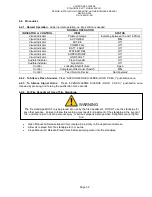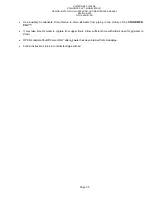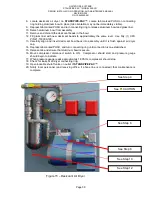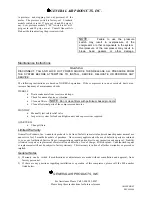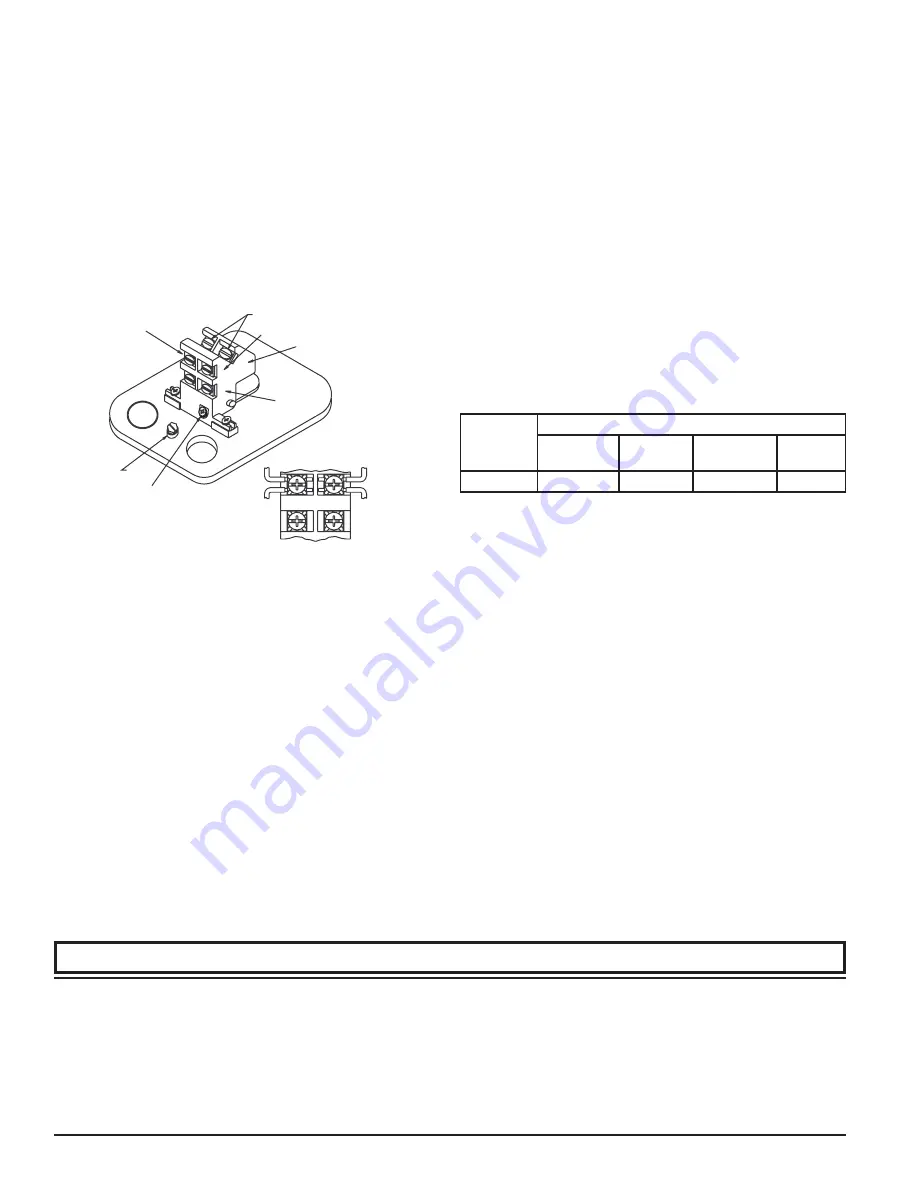
WET
SYSTEM
ALARM
CHECK
VALVE
OS & Y
VALVE
WATER
BY-PASS
VALVE
LOCAL ALARM
SHUT OFF
VALVE
RETARD
WATER
MOTOR
GONG
EPS10EXP
WET
SYSTEM
ALARM
CHECK
VALVE
OS & Y
VALVE
WATER
BY-PASS
VALVE
LOCAL ALARM
SHUT OFF
VALVE
RETARD
WATER
MOTOR
GONG
EPS10EXP
DRY
SYSTEM
ALARM
CHECK
VALVE
OS & Y
VALVE
WATER
BY-PASS
VALVE
LOCAL ALARM
SHUT OFF
VALVE
WATER
MOTOR
GONG
CHECK
VALVE
EPS10
WET SYSTEM
WET SYSTEM
DRY SYSTEM
WIRE TO ALARM
INDICATING CIRCUIT
OF FIRE ALARM
CONTROL PANEL
WIRE TO ALARM
INDICATING CIRCUIT
OF FIRE ALARM
CONTROL PANEL
WIRE TO ALARM
INDICATING CIRCUIT
OF FIRE ALARM
CONTROL PANEL
TO
SPRINKLER
SYSTEM
TO
SPRINKLER
SYSTEM
TO
SPRINKLER
SYSTEM
FIGURE 2. TYPICAL PIPING DIAGRAM FOR EPS10-1, EPS10-2
W0171-01
FIGURE 3. SWITCH TERMINALS:
W0173-00
GROUND
SCREW
COM
B
A
COMMON
TERMINALS
BREAK WIRE AS SHOWN FOR
SUPERVISION OF CONNECTION.
DO NOT ALLOW STRIPPED WIRE
LEADS TO EXTEND BEYOND
SWITCH HOUSING. DO NOT
LOOP WIRES.
SWITCH #1
SWITCH #2
SW
ITC
H #2
LOCKING
SCREW
TERMINAL “A”
TERMINAL “B”
EPS10
EPS10
Each number represents an approximate trip point change of 0.2 PSI.
One full rotation changes the trip point setting by approximately 2.5 PSI.
A reset differential of approximately 3 PSI is typical throughout the entire
adjustment range of switch.
4. Retest the set point several times to ensure accuracy of setting.
5. Re-seat locking screw.
TABLE 2.
MODEL
FACTORY SETTINGS (PSI)
Fall
(Low Switch)
Approx.
Reset
Rise
(High Switch)
Approx.
Reset
EPS10-1
—
—
4 – 8
3 PSI diff.
EPS10-2
—
—
4 – 8
3 PSI diff.
NOTE:
The sensor assembly is not field replaceable. Do not attempt to disas-
semble these parts. If you have any questions, consult System Sensor.
System Sensor recommends careful consideration of the following fac-
tors when specifying and installing Alarm Pressure Switches. Always
refer to the Installation and Maintenance Instruction for specific rec-
ommendations on individual devices before installing the unit.
• Electrical ratings stated in literature and on nameplates should not be
exceeded.
• Overload on switch can cause failure on the first cycle. Always wire
devices according to national and local electrical codes.
• Install units away from shock and vibration. Proper electrical fittings should
be used to prevent moisture from entering the enclosure via the conduit.
• Test all devices for proper operation after initial installation. Perform pre-
ventive maintenance and periodic testing as required by the applicable
NFPA standards but not less than bimonthly.
• Install a back-up control for all critical applications where control failure
could endanger life or property. A backup control to serve as a high or
low limit control is especially recommended for applications where a
runaway condition could result.
• Do not mount unit where ambient temperatures will exceed published limits.
• Avoid impact or mechanical loading.
D770-08-00
2 I56-0551-009R
© System Sensor 2014
System Sensor warrants its enclosed pressure switch to be free from defects in materials
and workmanship under normal use and service for a period of three years from date of
manufacture. System Sensor makes no other express warranty for this pressure switch.
No agent, representative, dealer, or employee of the Company has the authority to in-
crease or alter the obligations or limitations of this Warranty. The Company’s obligation
of this Warranty shall be limited to the repair or replacement of any part of the pressure
switch which is found to be defective in materials or workmanship under normal use
and service during the three year period commencing with the date of manufacture.
After phoning System Sensor’s toll free number 800-SENSOR2 (736-7672) for a Return
Authorization number, send defective units postage prepaid to: System Sensor, Return
Please refer to insert for the Limitations of Fire Alarm Systems
THREE-YEAR LIMITED WARRANTY
Department, RA #__________, 3825 Ohio Avenue, St. Charles, IL 60174. Please include a
note describing the malfunction and suspected cause of failure. The Company shall not
be obligated to repair or replace units which are found to be defective because of damage,
unreasonable use, modifications, or alterations occurring after the date of manufacture.
In no case shall the Company be liable for any consequential or incidental damages for
breach of this or any other Warranty, expressed or implied whatsoever, even if the loss
or damage is caused by the Company’s negligence or fault. Some states do not allow the
exclusion or limitation of incidental or consequential damages, so the above limitation
or exclusion may not apply to you. This Warranty gives you specific legal rights, and you
may also have other rights which vary from state to state.
ADJUSTMENTS TO FACTORY SETTINGS
Both EPS10-1 and EPS10-2 devices are pre-adjusted at the factory to alarm
at 4–8 PSI on rising pressure (see Table 2). Pressure switch settings may be
adjusted in the field to obtain a different pressure alarm response from 4 PSI
to 20 PSI. The switch has an override feature on the adjustment mechanism to
prevent exceeding the 20 PSI max. setting of the switch. This override feature
carries with it a tolerance band that may limit the upper adjustment to 16–20
PSI. Care must be used when setting the switch to ensure that the lower limit
of 4 PSI is not exceeded. This will allow the switch to reset within the 3 PSI
differential stated.
1. Install pressure switch as stated in “INSTALLATION” portion of instruc-
tion manual. Attach pressure test source to system.
2. Back off locking screw (see Figure 1) to allow main adjustment wheel to
rotate freely.
3. Test trip point by slowly introducing pressure from the pressure test
source. When trip point is found, reduce pressure to zero. Rotate main
adjustment wheel (counterclockwise to increase pressure) and retest un-
til switch trip point is at the desired pressure setting (4–20 PSI range).



